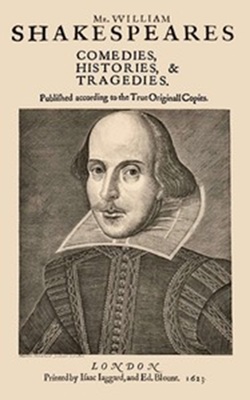Dec 17, 2025
Dec 17, 2025
When ice cold Uranus, the seventh planet from the Sun, was discovered in 1781 by the Hanover born British astronomer William Herschel, he named it Georgium Sidus (George’s Star), in honor of the reigning British monarch King George III.
Astronomers elsewhere, however, differed and gave it a traditional name from Greek mythology, as Uranus, the lord of the sky and father of the Titans.
As though to compensate for that slight to the British realm, when Uranus’ 29 moons were discovered in the next nearly three centuries, astronomers named most of them after celebrated characters of the all time great monarch of English literature, William Shakespeare.
So we have in space Juliet and Miranda, Ophelia and Desdemona, Portia and Belinda and many, many more circling Uranus in their elliptical or erratic orbits.
Of the 29 moons, 27 have been named, all in honor of the characters from Shakespeare plays, except two which came from Alexander Pope’s 'The Rape of the Lock' (Ariel and Umbriel). Ariel appears both in Pope’s poem and Shakespeare’s 'The Tempest.'
'The Tempest' in fact is on top of the list when it comes to names for Uranus moons: Prospero with his magical powers, his pretty daughter Miranda, her lover prince Ferdinand, airy spirit in Prospero’s service Ariel, enslaved servant Caliban, Caliban’s mother Sycorax and god Setebos, court jester Trinculo, drunken butler Stephano and courtier Francisco are all in orbit around the icy giant.
Oberon, Titania and Puck are named after characters in 'A Midsummer Night’s Dream,' Portia comes from 'The Merchant of Venice,' Ophelia from 'Hamlet,' Juliet from 'Romeo and Juliet,' Bianca from 'The Taming of the Shrew,' Perdita from 'The Winter’s Tale,' Cressida from 'Troilus and Cressida' and Margaret from 'Much Ado About Nothing.'
Even NASA followed the astronomers' practice. When its Voyager-2 space explorer discovered an inner moon of Uranus in 1986, it named it Rosalind, after the daughter of the banished Duke in 'As You Like It.'
Female characters account for more in the moon names, 15, as against 12 male names.
Ariel figures both in the Pope poem as well as in Shakespeare’s play, but when the astronomer chose the name he had in mind Ariel of 'The Rape of the Lock.'
The moon Ariel, the second closest to the planet, was discovered in 1851 by an English beer-brewer turned amateur astronomer, William Lassell. He made a fortune from his beer brewing business and used that money to pursue his passion: astronomy. He developed a mirror reflector telescope and installed it in his Liverpool home and it was here that he secured his first success: discovering a moon close to the planet Neptune barely a fortnight after the planet itself was discovered by another astronomer.
While Herschell and Lassell were among the pioneer astronomers, many of the other moons of Uranus were discovered by Voyager expeditions and the Hubble Telescope.
 Whoever be the discoverers, these moons forever will be known after Shakespeare’s unforgettable characters.
Whoever be the discoverers, these moons forever will be known after Shakespeare’s unforgettable characters.
This November marks the 402nd anniversary of publication of the first collected works of Shakespeare, known by its iconic name 'The First Folio.' Bringing within its fold 36 plays, the volume came out in 1623 and arranged the plays in three groups as Comedies, Histories and Tragedies, a grouping that remained forever.
While the astronomers made celestial homage to the Bard by naming Uranus moons after his characters, I too made my humble homage to him when I named the book publishing firm I founded in 2008 as FOLIO, in remembrance of the The First Folio.
In its 17th year after inception, FOLIO is in better hands now, run efficiently by Prof Geetha Nair, who is, to borrow a Dante expression quoted by T S Eliot, 'il miglior fabbro,' the better craftsperson.
01-Nov-2025
More by : P. Ravindran Nayar